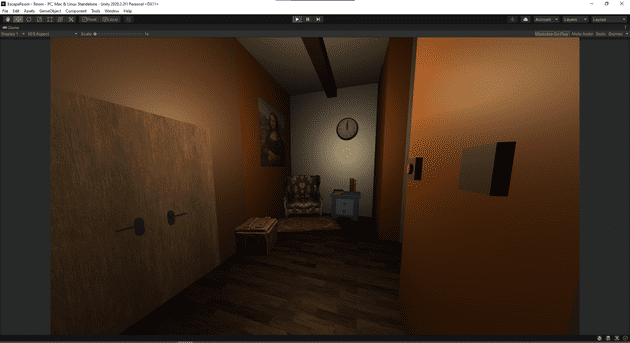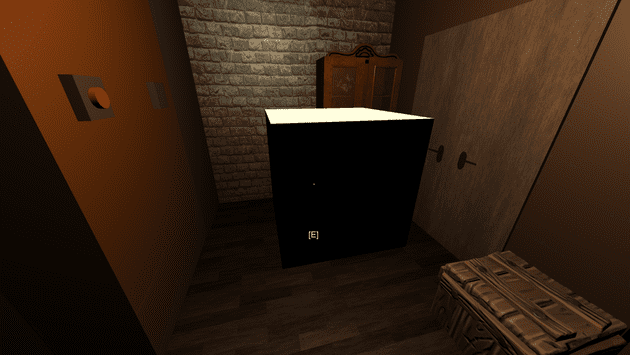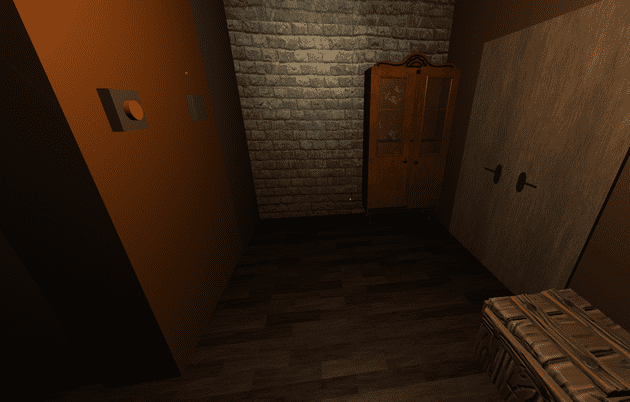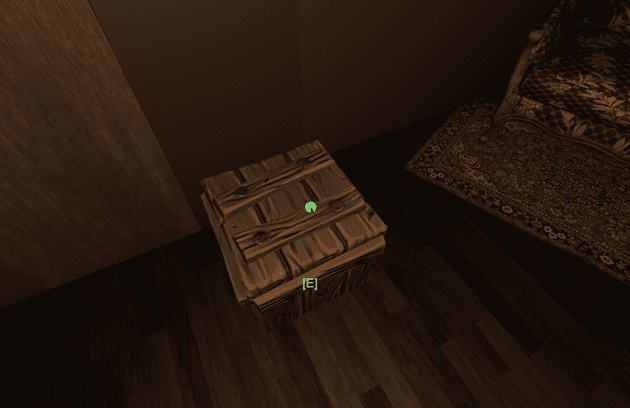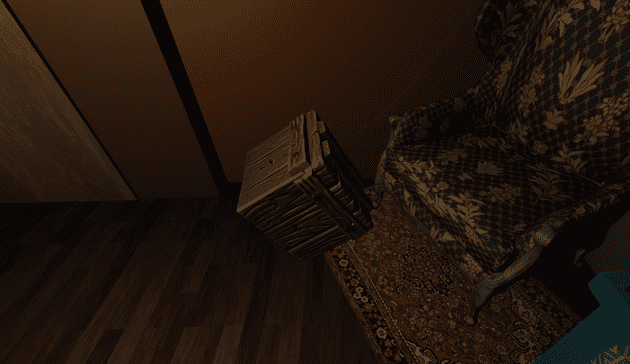One of my hobbies is to build some proof-of-concept games.
What does that mean?
That I don’t have the time to build full games since I’m mostly developing my skills as a full stack web engineer but I do like diversifying myself.
Unity Engine
The Unity Engine is one of the most used game engine available today. Even though there are paying plans, a lot can be achieved with the free version. Besides, an asset store where a great number of decoration elements, sounds, scripts and more are available.
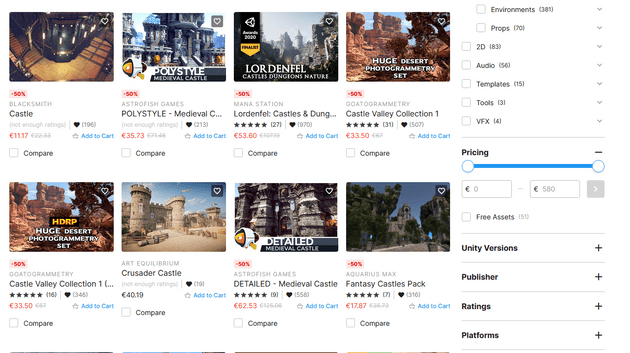
On the Unity Learning Website a vast number of tutorials get you started.
Introduction
Currently I’m creating a nice Escape Room game in order to get acquainted with key concepts of game design.
In this project I want to mainly focus on the player mechanics since it will rely on user interaction and observation of the game environment.
The design I imagined is simple:
- The player would have an
InteractionControllerscript that would be responsible for doing the interface between the player and the interactable component. - All the interactable objects would inherit an
InteractableBaseclass that would satisfy anIInteractableinterface. - Then, I would like the user to perform some basic actions like Push, Observe, Destroy or Switch a light…
IInteractable
Let’s start simply with the IInteractable interface:
public interface IInteractable
{
float HoldDuration { get; }
bool HoldInteract { get; }
bool MultipleUse { get; }
bool IsInteractable { get; }
void OnInteract();
}The contract is clear, an interactable object should have the following characteristics:
- A
HoldDurationfloat to determine how long should be pressed a button to realize the interaction; - A
HoldInteractboolean to know if the button to interact should be hold pressed; - A
MultipleUseboolean to know if multiple uses are possible; - A
IsInteractableboolean to know if the interactable is still interactable (unique interaction for instance); - An
OnInteractmethod.
InteractableBase
The responsability of this class is to implement the element required from the IInteractable interface:
using UnityEngine;
public class InteractableBase : MonoBehaviour, IInteractable
{
[Header("Interactable Settings")]
private float _holdDuration = 1f;
[Space]
private bool _holdInteract = true;
private bool _multipleUse = false;
private bool _isInteractable = true;
private bool _deactivateInteraction = false;
public float HoldDuration
{
get => _holdDuration;
set => _holdDuration = value;
}
public bool HoldInteract => _holdInteract;
public bool MultipleUse => _multipleUse;
public bool IsInteractable => _isInteractable;
public virtual void OnInteract()
{
Debug.Log("INTERACTED : " + gameObject.name);
}
}This code is straightforward, some getters/setters are used to access the private members of the class.
By default, the hold duration is set to one second.
This base class will be extended to the possible actions.
InputHandler
In order to interact with the objects, an input handler is necessary:
using UnityEngine;
public class InputHandler : MonoBehaviour
{
public InteractionInputData interactionInputData;
void Start()
{
interactionInputData.ResetInput();
}
void Update()
{
GetInteractionInputData();
}
void GetInteractionInputData()
{
interactionInputData.InteractedClicked = Input.GetKeyDown(KeyCode.E);
interactionInputData.InteractedReleased = Input.GetKeyUp(KeyCode.E);
}
}The InteractionInputData class allows to define the interactioin behavior.
InteractionInputData
using UnityEngine;
[CreateAssetMenu(fileName = "InteractionInputData", menuName = "InteractionSystem/InputData")]
public class InteractionInputData : ScriptableObject
{
private bool m_interactedClicked;
private bool m_interactedReleased;
public bool InteractedClicked
{
get => m_interactedClicked;
set => m_interactedClicked = value;
}
public bool InteractedReleased
{
get => m_interactedReleased;
set => m_interactedReleased = value;
}
public void ResetInput()
{
m_interactedClicked = false;
m_interactedReleased = false;
}
}This allows to use ScriptableObject: which is a data container to save large amounts of data.This is usefull to reduce the memory usage by avoiding copies of values.
InteractionData
using UnityEngine;
[CreateAssetMenu(fileName = "InteractionData", menuName = "InteractionSystem/InteractionData")]
public class InteractionData : ScriptableObject
{
private InteractableBase m_interactable;
public InteractableBase Interactable
{
get => m_interactable;
set => m_interactable = value;
}
public void Interact()
{
m_interactable.OnInteract();
ResetData();
}
public bool IsSameInteractable(InteractableBase _newInteractable) => m_interactable == _newInteractable;
public bool IsEmpty() => m_interactable == null;
public void ResetData() => m_interactable = null;
}Take a moment to understand how fit the different parts, because it’s in the InteractionController that it would all come together.
InteractionController
Before detailing the actions the player will be able to make, let’s have a look at the controller. It would allow the user to interact with the interactable objects.
using UnityEngine;
public class InteractionController : ShowAction
{
[Header("Data")]
public InteractionInputData interactionInputData;
public InteractionData interactionData;
[Space]
[Header("Ray Settings")]
public float rayDistance;
public float raySphereRadius;
public LayerMask interactableLayer;
private Camera m_camera;
private bool m_interacting;
private float m_holdTimer = 0f;
public float HoldTimer => m_holdTimer;
public CircularLoading circularLoading;
void Awake()
{
m_camera = FindObjectOfType<Camera>();
}
void Update()
{
CheckForInteractable();
CheckForInteractableInput();
}
void CheckForInteractable()
{
var _ray = new Ray(m_camera.transform.position, m_camera.transform.forward);
bool _hitSomething = Physics.SphereCast(_ray, raySphereRadius, out RaycastHit _hitInfo, rayDistance, interactableLayer);
if (_hitSomething)
{
var _interactable = _hitInfo.transform.GetComponent<InteractableBase>();
if (_interactable != null)
{
if (interactionData.IsEmpty())
{
interactionData.Interactable = _interactable;
}
else
{
if (interactionData.IsSameInteractable(_interactable))
{
interactionData.Interactable = _interactable;
}
}
}
}
else
{
interactionData.ResetData();
}
Debug.DrawRay(_ray.origin, _ray.direction * rayDistance, _hitSomething ? Color.green : Color.red);
if (_hitSomething)
{
OnMouseOver();
}
else
{
OnMouseExit();
}
}
void CheckForInteractableInput()
{
if (interactionData.IsEmpty() || interactionData.Interactable.DeactivateInteraction)
{
return;
}
if (interactionInputData.InteractedClicked)
{
m_interacting = true;
m_holdTimer = 0f;
}
if (interactionInputData.InteractedReleased)
{
m_interacting = false;
m_holdTimer = 0f;
}
if (m_interacting)
{
if (interactionData.Interactable.IsInteractable)
{
if (interactionData.Interactable.HoldInteract)
{
m_holdTimer += Time.deltaTime;
circularLoading.LoadingProgress = m_holdTimer;
if (m_holdTimer >= interactionData.Interactable.HoldDuration)
{
interactionData.Interact();
m_interacting = false;
circularLoading.LoadingProgress = 0f;
}
}
else
{
interactionData.Interact();
m_interacting = false;
circularLoading.LoadingProgress = 0f;
}
}
return;
}
circularLoading.LoadingProgress = 0f;
}
}At the begining some variables are set directly from the Unity interface:
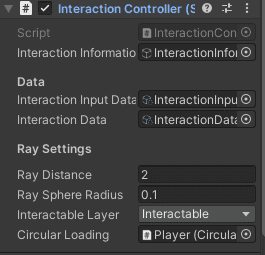
The CheckForInteractable method is responsible for setting the interactable in the interactionData instance when the player’s raycast hit the interactable layer.
It’s also show the interaction button but activating the UI layer.
The CheckForInteractableInput method would perform the Interact() method when the HoldDuration is reached.
It also displays a circular animation to show how much of the interaction is ongoing.
DestroyInteractable
No magic there, the interaction makes the gameObject disappear:
public class DestroyInteractable : InteractableBase
{
public override void OnInteract()
{
base.OnInteract();
DestroyImmediate(gameObject);
}
}PushInteractable
using UnityEngine;
public class PushInteractable : InteractableBase
{
public InteractionData interactionData;
private Rigidbody _Rigidbody;
private float _Thrust = 300f;
void Start()
{
_Rigidbody = GetComponent<Rigidbody>();
}
public override void OnInteract()
{
SetLayerToDefault();
_Rigidbody.AddForce(transform.forward * _Thrust);
interactionData.Interactable.DeactivateInteraction = true;
}
private void SetLayerToDefault()
{
gameObject.layer = LayerMask.GetMask("Default");
}
}This applies a force to a rigidbody to make a push. Once done, the current layer InteractableLayer is set to default (so the information interaction text disappears) and the DeactivateInteraction is set to true. Thus, we can only interact once with the object.
ObserveInteractable
This one is a bit tricky so it would be explained in an other article: Observation System
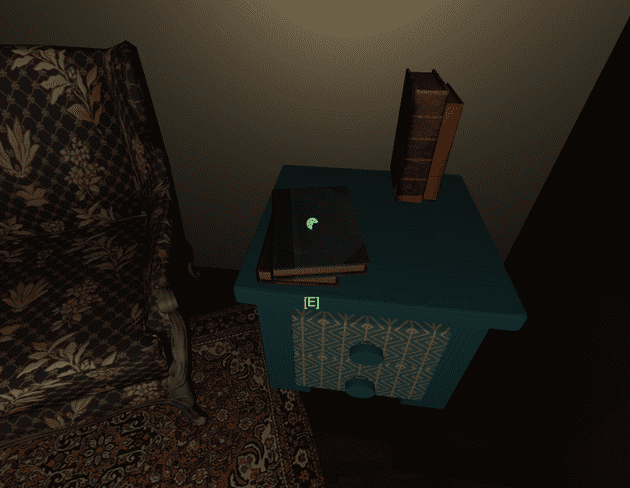
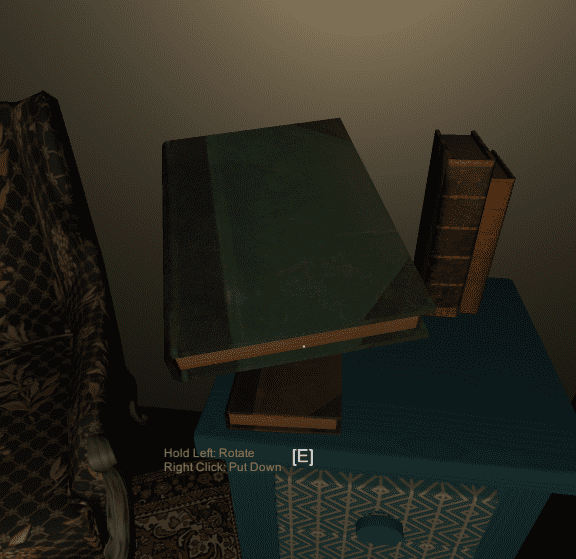
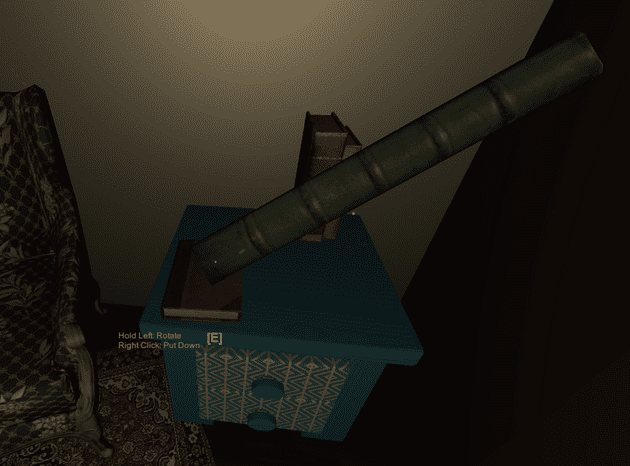
SwitchLight
using UnityEngine;
public class SwitchLight : InteractableBase
{
public GameObject LightOn;
public GameObject LightOff;
public override void OnInteract()
{
if (LightOn.activeSelf)
{
LightOn.SetActive(false);
LightOff.SetActive(true);
}
else
{
LightOn.SetActive(true);
LightOff.SetActive(false);
}
}
}Two gameobjects corresponding to two different objects need to be set and are simply set active or inactive:
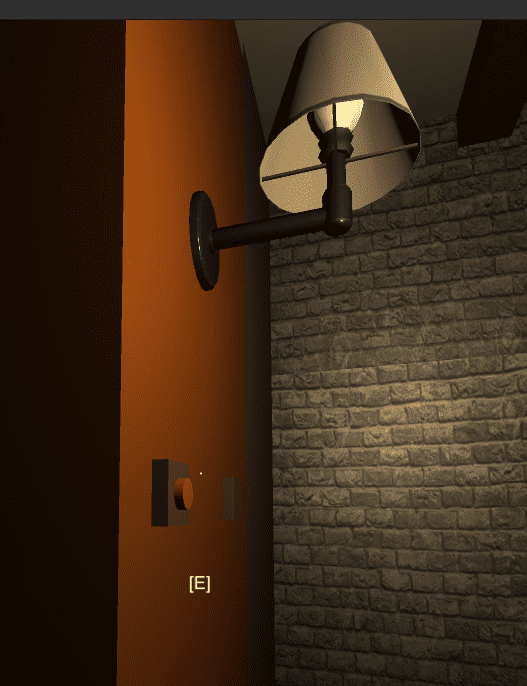
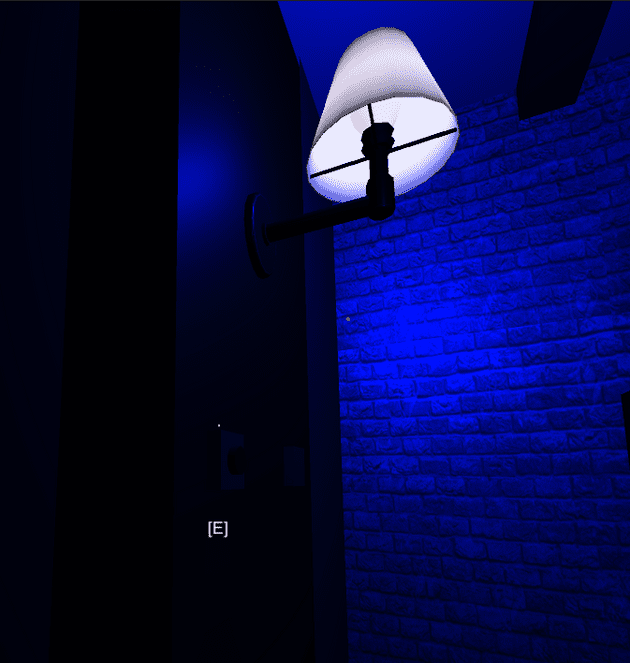
To conclude - The key takeaways
- An
InteractionControllerscript is responsible for doing the interface between the player and the interactable component. - All the interactable objects would inherit an
InteractableBaseclass that satisfies anIInteractableinterface. - We implemented different actions: Push, Observe, Destroy and Switch a light…
Any remarks ?
Make a pull request or open an issue!
Don’t know how to do it ? Check out this very well explained tutorial
